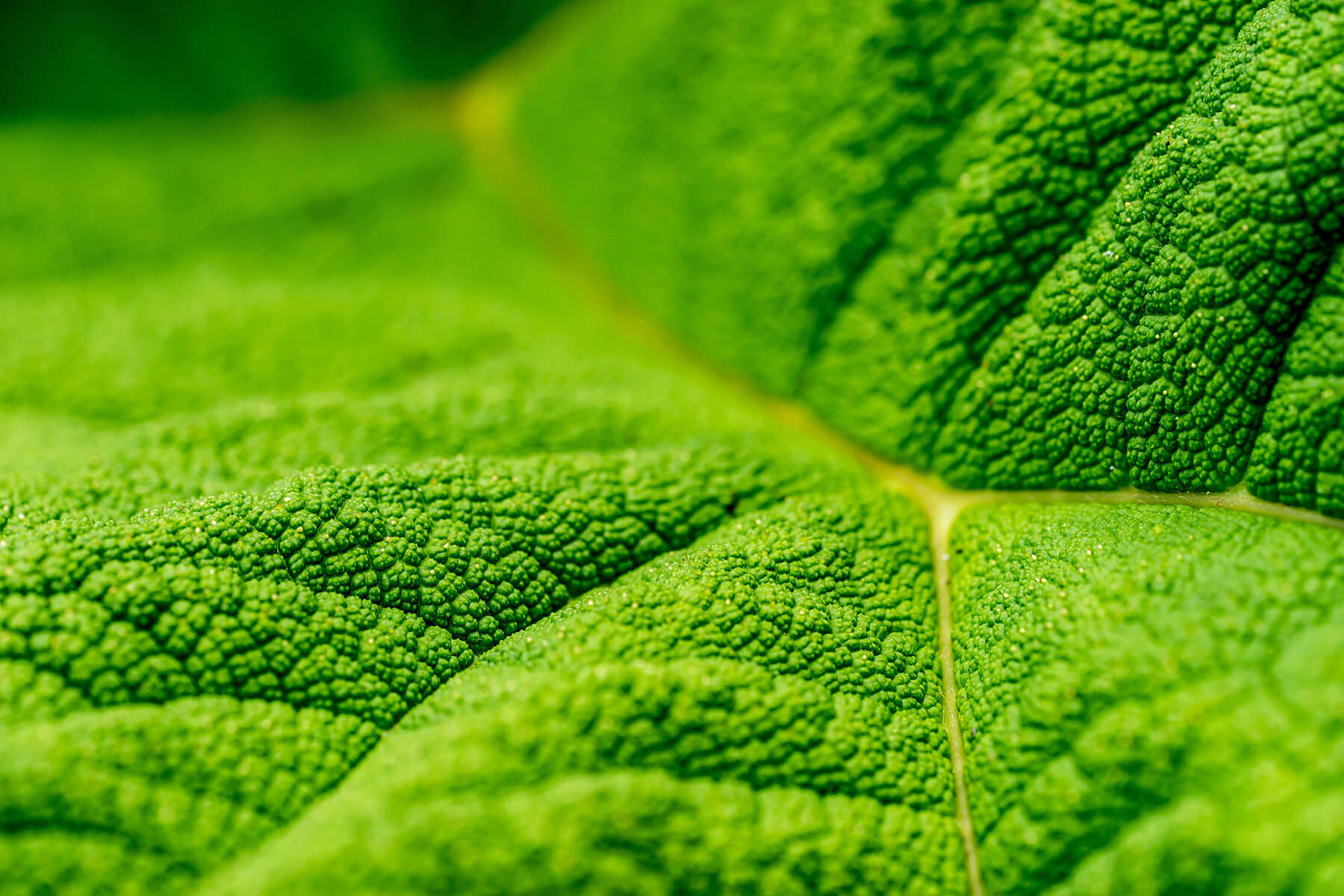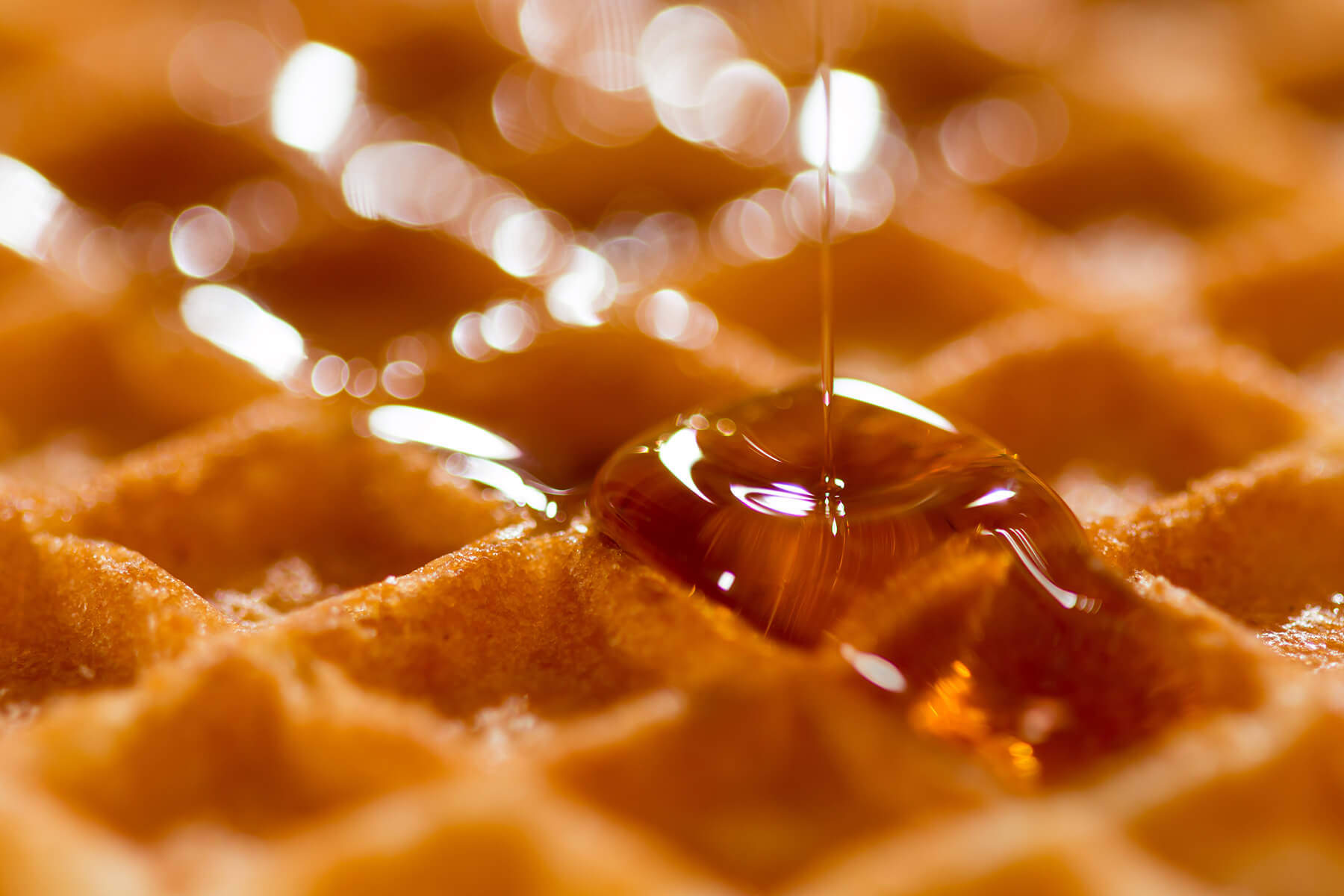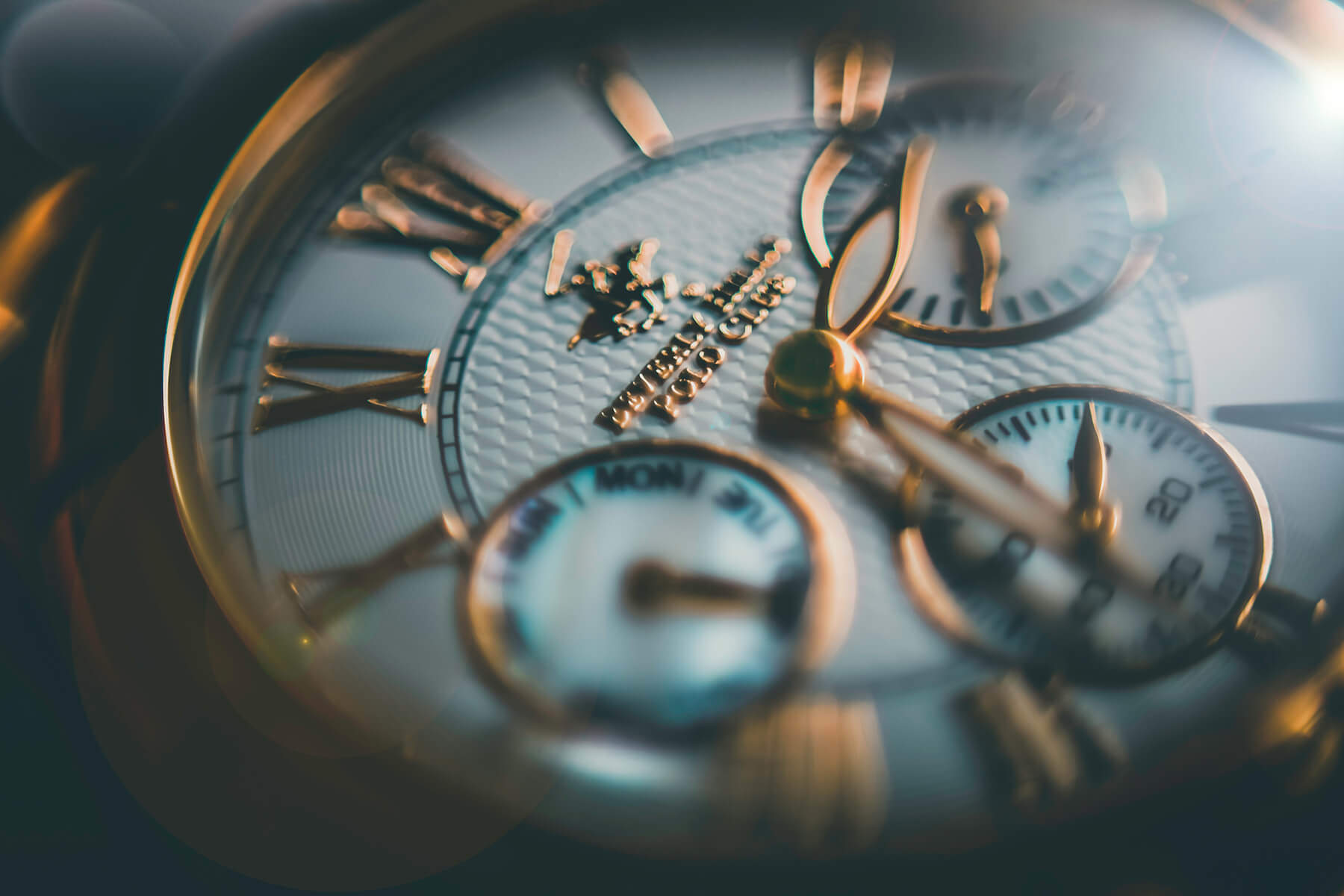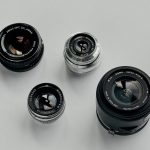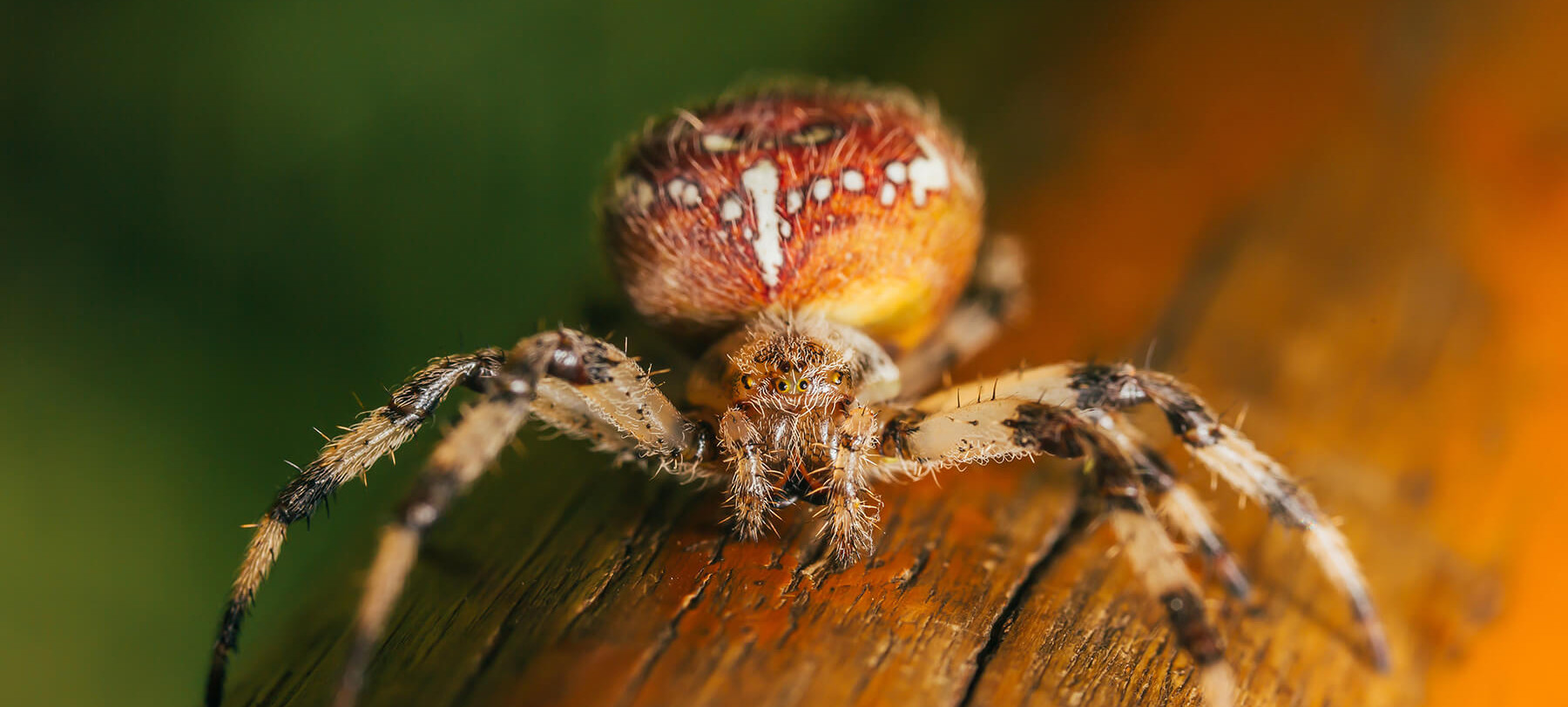
An introduction to macro photography
Whether you’re an experienced photographer or you’re just beginning your journey, there’s a giant world of tiny wonders to be found on the other side of a macro lens, and it’s far more accessible than you might think.
Read time: 7 minutes
Macro photography isn’t just insects. It can be a great tool when shooting nature, food and even in product photography. One of the greatest joys of macro photography is that you can capture fantastic results in your own home or garden.
Click the images to see a larger view
Gear for macro photography
Traditionally, macro photography is done using a lens with at least a 1:1 magnification ratio. More commonly, though, the term describes very close-up photography. Generally speaking, you don’t need a lot of expensive gear to take good photos, but in the case of macro photography – for practical purposes – there is a minimum of equipment that you’ll need.
Good news though: the lens you own may already have a very decent magnification ratio, and if not, there’s an easy hack to get around this. We’ll cover that in a moment but first, let’s go over what magnification ratio is.
We covered magnification ratio in our ultimate lens guide, but in case you missed it, here it is. In short, it’s the relationship between the size of an actual object and the size it appears on your camera’s sensor. For example, a 1:1 lens can reproduce an object at its real size.
When it comes to macro photography, this is perhaps the single most important factor to consider; we’d recommend a 1:2 lens as a minimum.
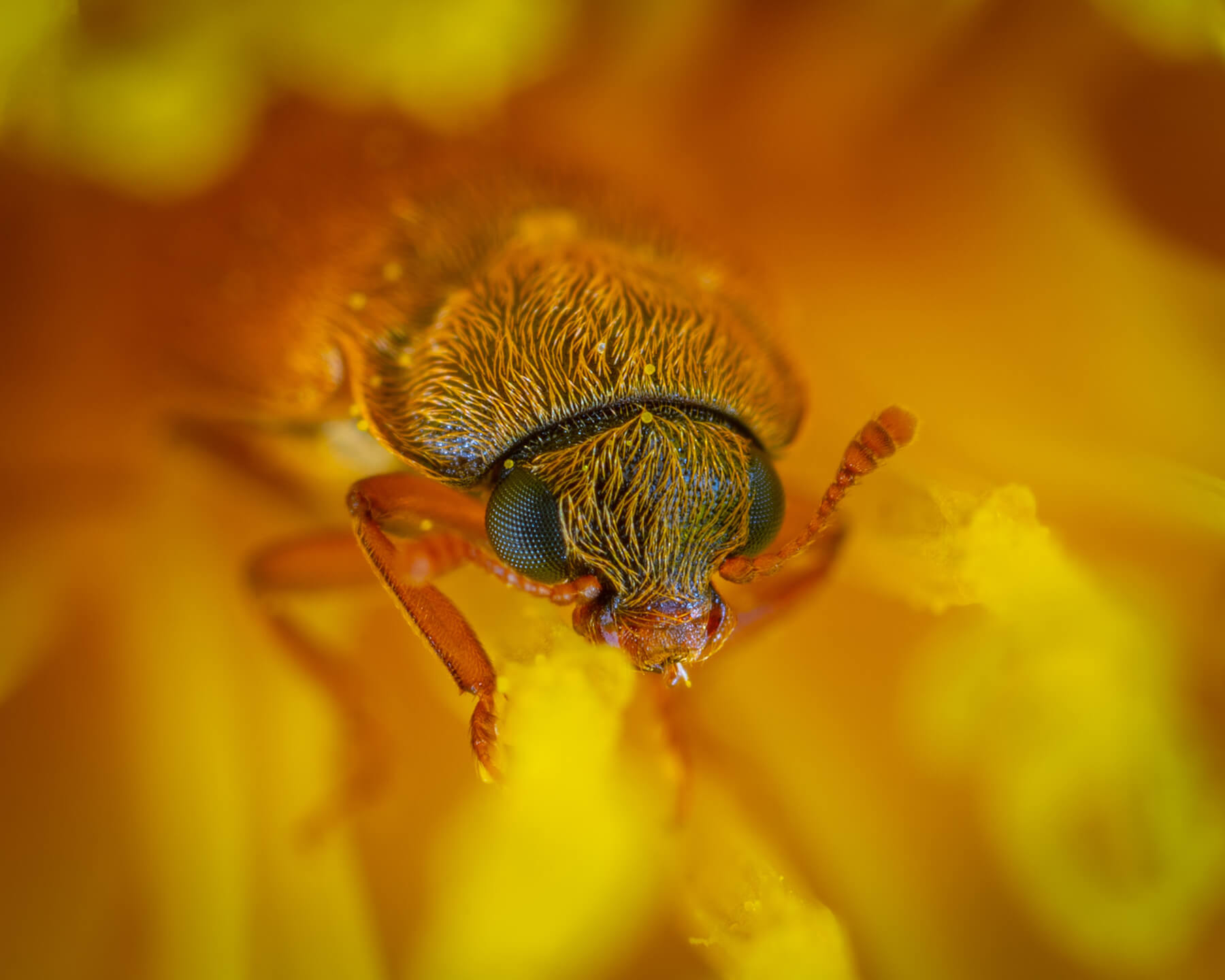
Here’s that hack we promised. If you have a mid-range lens – something around 50mm works best – you can physically flip it and use it for macro photography. Hold the front element of the lens to the sensor and shoot away. While it works quite well, this isn’t as good as a real macro lens, so if you want to get serious about getting seriously close, it’s worth investing in the real thing.
Focal length is also an important factor in a macro lens. You might assume you’ll want something wide so you can get as close as possible, but that’s not the case. If you do want to shoot living subjects, you might want a longer lens so you can shoot from a distance.
A tripod is another incredibly handy bit of kit for macro photography. When the scale of your shot is this small, the slightest movement is amplified, especially if you are using a longer lens. In the vast majority of macro photography situations, a tripod is advisable. Another key tip is using your camera’s timer or remote Wi-Fi functionality to avoid possibly nudging the camera while pressing the shutter manually.
An important element that shouldn’t be overlooked in macro photography is light. Due to having a fairly narrow aperture and fast shutter speed – we’ll cover why shortly – you’re probably going to need a lot of light. Also, with a well-lit subject, you’ll be able to see more of the tiny details you’re after. Natural light may be enough, but in darker conditions, consider a portable LED panel, a ring flash or a speedlight. Even your camera’s built-in flash or a smartphone torch will improve an otherwise dim picture.

Image The beautiful close-up shapes of a dandelion (credit: Paul Talbot)
Techniques for macro photography
So, you’ve got your gear, but what should you do with it? Well, one of your first steps should be selecting manual focus.
Even if your lens has autofocus capabilities, chances are you’ll be better off using manual focus. On this tiny scale, a sharp focus is the key to a great image, and it’s best taken into your own hands. One setting that’s definitely helpful when manually focusing is focus peaking.
Found in the settings of most modern cameras, focus peaking offers a highlight on the most in-focus part of your scene, making it easier to nail that crisp shot. Focus on the most eye-catching part of the subject for truly striking results.
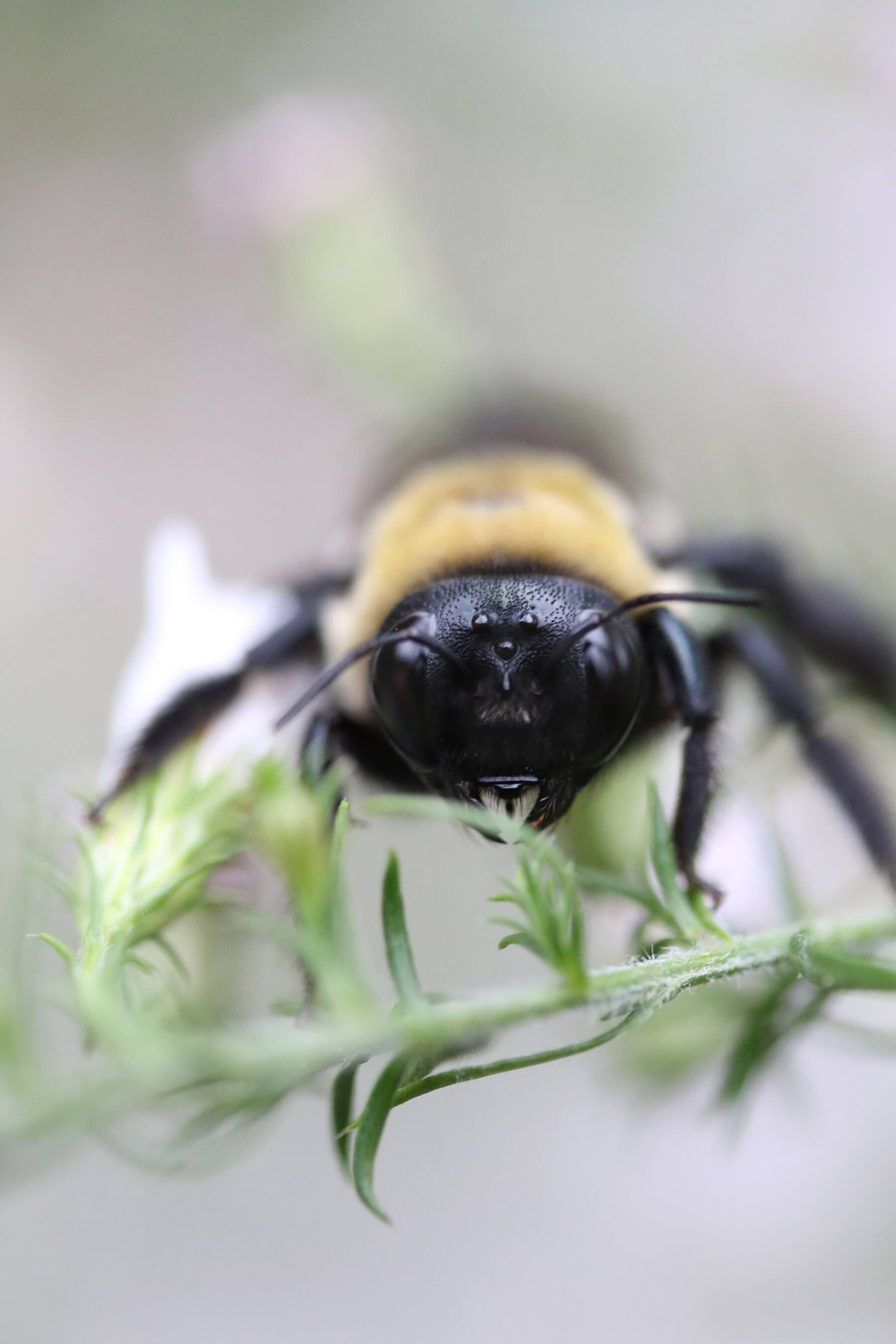
Image This bee’s head is the clear focal point of the image (credit: Kelsey Krajewski)
Aperture is the next setting on the list, but it’s still all to do with focus. Set too wide and your depth of field becomes fractionally shallow. To give yourself the best chance at a sharp focus, it’s a good idea to stop down.
When shooting macro shots, shutter speed should also be carefully considered. As we mentioned with the tripod, you don’t want even the slightest movement of your frame, so a fast shutter speed can be a smart move.
If you have to close your aperture and have a fast shutter speed – and you’re not using an additional light source – you may have to bump up your ISO to compensate. Just be mindful that dialling up too high can cause unwanted noise. Balance is key here.
Lastly on techniques, we have composition. It’s so easily overlooked in macro photography, but it’s what separates the good shots from the great ones. How much of your subject’s surroundings are you going to show? What angle are you shooting from and where are you going to place the subject in frame? These are all factors we shouldn’t overlook just because we’ve scaled down in size.
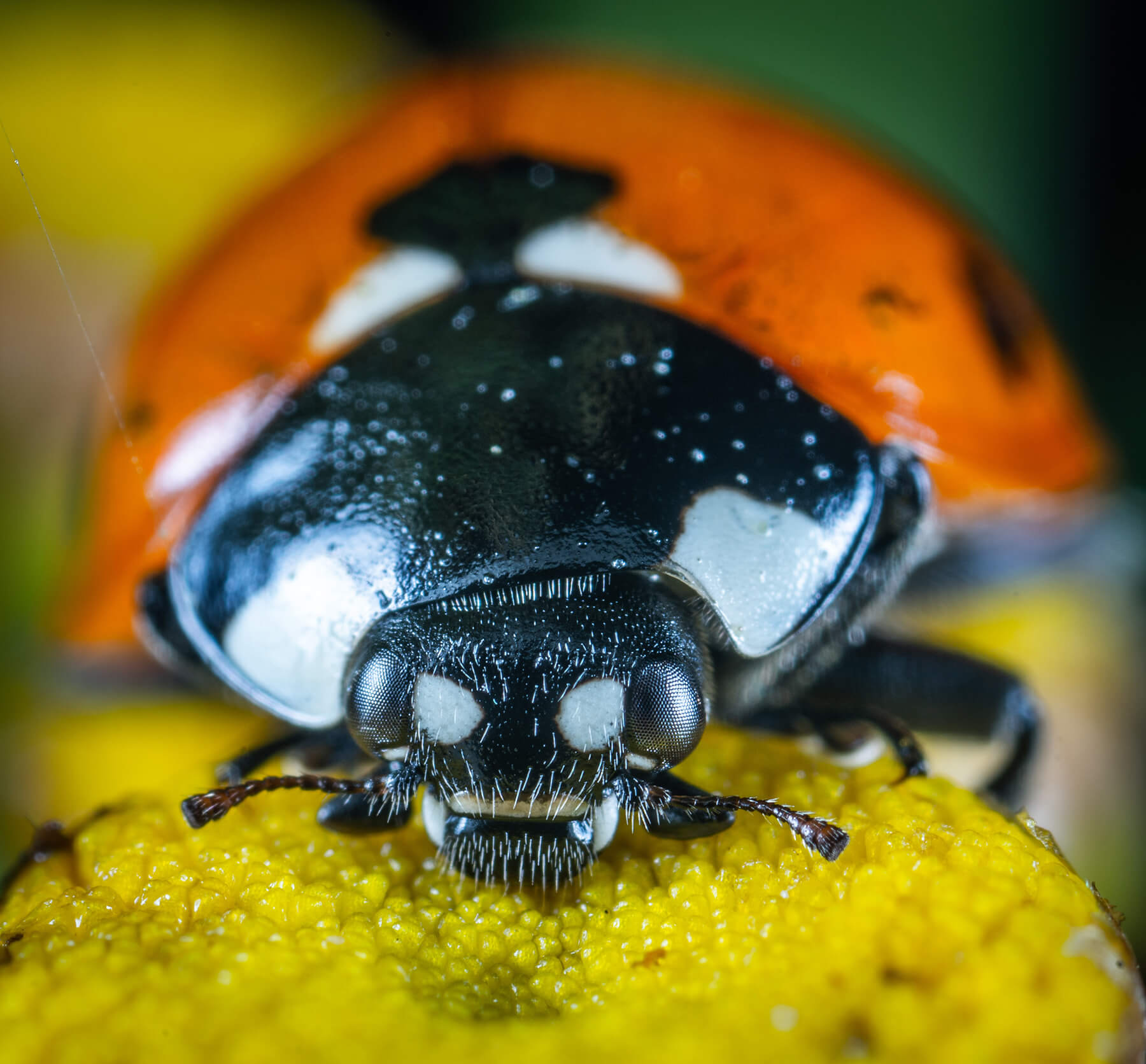
Tips
We’ve covered all the basics, but here are our extra top tips for truly pleasing macro shots.
- For more sharpness than your lens will allow in-camera, use focus stacking in post. This is done through similar means as the time stack, as described in our creative settings guide.
- Keep your camera completely still, then take a number of shots with a slightly different focus each time. Your camera may even do this automatically in the form of focus bracketing. The more photos you take, the more chance you’ll get an accurate one.
- Our next tip is specific for those who plan to shoot living creatures. Know your subject. Read up on what can be found on your doorstep and how best to find it. And remember to be respectful of any animal in its environment – big or small.
- If you’re shooting flowers and foliage, take a water spray bottle with you and give your subject a spritz of water before shooting to mimic morning dew. Get clever with your lighting and composition and see if you can shoot a reflection in a droplet of water.
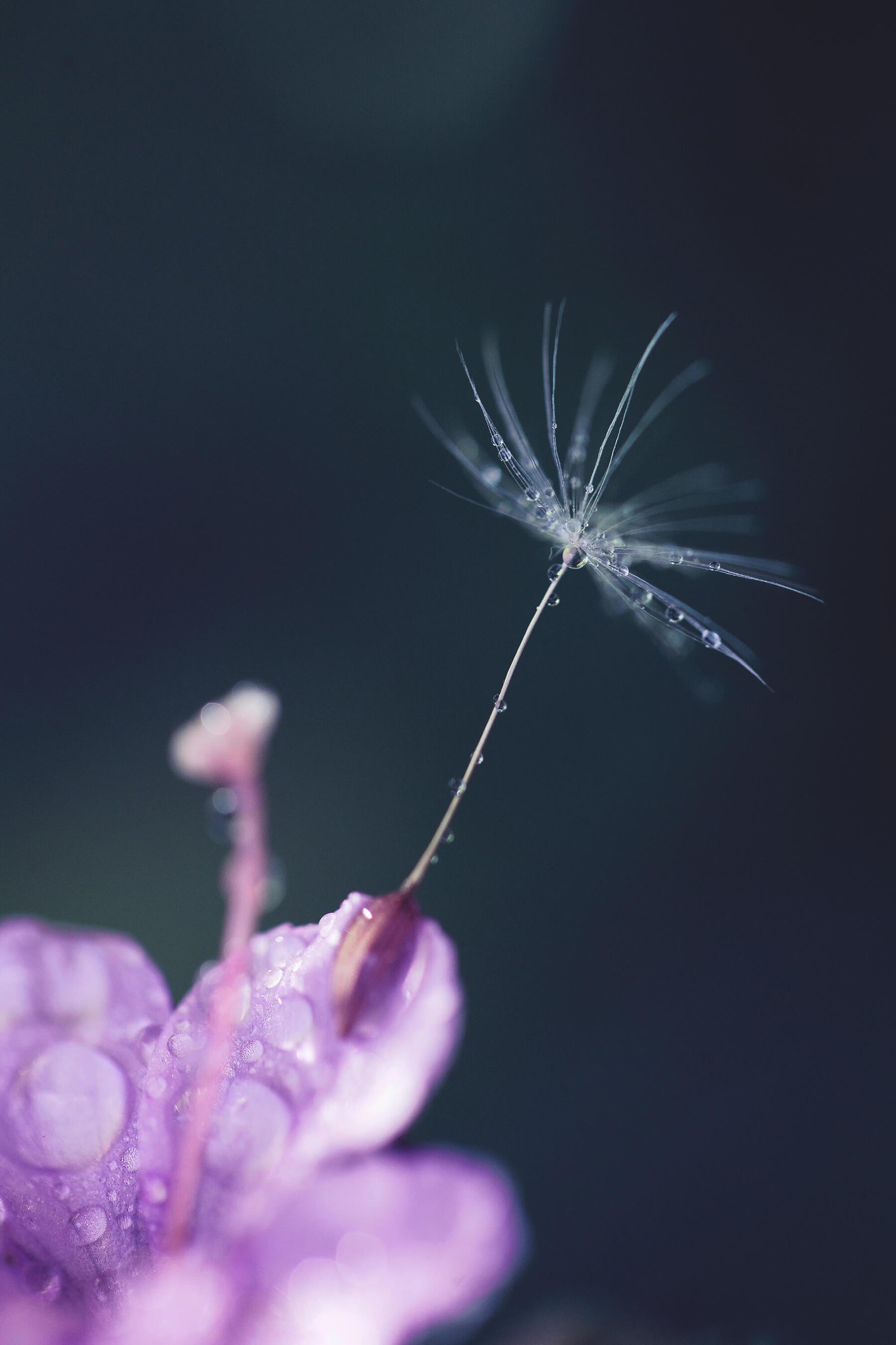
Image A few droplets of water can add another fascinating layer to a macro shot (credit: Andrei Coman)
- For days when the weather is against you, make the most of what you have around the house. Macro photography opens up a whole new micro world of picture-taking possibilities, so get creative, and think abstract! Cutlery with moody lighting, slices of lemon places over a light to back illuminate, or even the rain settling on a windowpane with street lighting behind it are just a few ideas.
- Lastly, here’s one you shouldn’t need to be told. Keep shooting! You’ll break through that ‘finding your feet’ stage and the more you shoot, the more likely you are to find great shots. If macro photography isn’t for you, that’s fine, but dedicate a little bit of time and effort and you just might be astounded.
We want to see your macro shots! Tag us in your photos on Instagram, Facebook and Twitter using the handle @PhotonewsPN.

